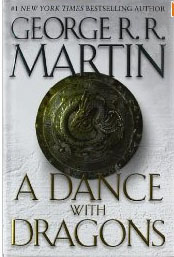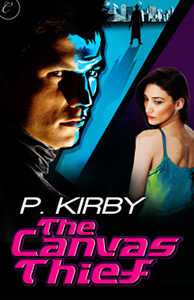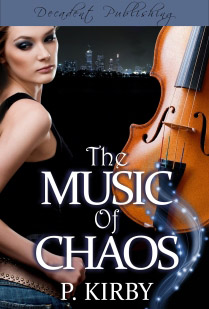 Because I’m a pathetic little shit who needs to have her opinions validated, about halfway through the monstrous tome that is A Dance with Dragons by George R. R. Martin, I went looking for reviews on Goodreads and Amazon and was relieved to see that I wasn’t the only one who was less than impressed with the latest installment in the A Song of Ice and Fire series. (One reviewer, rather hilariously, refers to it as Twenty-Four Characters in Search of a Story.)
Because I’m a pathetic little shit who needs to have her opinions validated, about halfway through the monstrous tome that is A Dance with Dragons by George R. R. Martin, I went looking for reviews on Goodreads and Amazon and was relieved to see that I wasn’t the only one who was less than impressed with the latest installment in the A Song of Ice and Fire series. (One reviewer, rather hilariously, refers to it as Twenty-Four Characters in Search of a Story.)
Well, okay, maybe I’m not that insecure. Frankly, I don’t give a rat’s hairy little ass about other people’s opinions. At the same time, I’m self aware enough to feel a smidgen distanced from humanity, when said humanoids all worship at the altar of what I think is a mediocre book. Rather than “pathetic,” call me…”curious.”
FWIW, A Dance with Dragons is entertaining, but at the midpoint, I renamed it Public Administration for Lords and Ladies in Westeros and Beyond, because the bulk of Jon and Daenerys’s chapters consist of endless haggling with the bureaucracy. Alternately, it could be A Guide to Dining in Westeros, The Free Cities, and Valyeria, given the amount of verbiage spent on eating. (Note to self, when in Mereen, don’t eat the meat, because, *cough*, dog. Also, avoid long marches through the snow with Stannis Baratheon unless you develop a craving for horse meat.)
Many readers’ complaints can be summed up as “absolutely nothing happens.” But I think the novel, and A Feast for Crows, before it, suffers from another more significant problem. The narrative has lost the heart of the story.
At the heart of the story, IMO, are the three families: the Starks, the Lannisters, and the Targaryens. The first three books in the series are told largely through the eyes/point of view (POV) of various members of those noble houses. Of the three, the Starks get the most POV chapters, which gives the impression (at least to this reader) that they are the protagonists. They’re positioned as the good guys, the decent family that gets dragged into the ugly unraveling of the Kingdom of Westeros. The Lannisters aren’t exactly the antagonists, but with hobbies like incest and child murder, they’re the honest, honor-driven Starks’ polar opposites. Of the Targaryens, there are only two, Daenerys and her creepy incestuous brother who meets a quick end in book one. Giving urgency to the political machinations is the fact that the mysterious Others–White-clad dementor-like demons from the North whose primary vocation is raising the dead–are poised to take over vast swaths of geography as a long (years) winter approaches. If the folks of Westeros don’t get their shit together, it’s going to be a very zombie Christmas.
The first three books, though supported by exhaustive world building, were tightly plotted, with a collection of POV characters whose individual story arcs were clearly, cohesively bound to the larger story arc. I’ve called it a kind of master class for writing fantasy; they’re that good.
Then in A Feast for Crows, the narrative wandered off, ignoring the core story and characters to indulge in a kind of Silmarillion-style bout of world building disease. This was the kind of stuff that turned me off fantasy, years ago. The story, already brimming to the top with detail, spills over into “somebody get the paper towels, this is a mess.”
A Dance with Dragons, mercifully, returns with some fan favorites–Daenerys, Jon Snow and Tyrion Lannister–but still feels like the work of an editor who overindulged his/her author. Gone are the tight, character-driven story lines, replaced by a random collection of almost non-sequitur chapters where new or secondary characters are given voice. The majority aren’t even given a complete story arc throughout the novel, but rather one or two chapters. It feels like writerly insecurity, a nervous need to tell the reader about every tedious factoid that might somehow inform the plot. Even fan favorites are given the shaft. Jaime Lannister, for example, doesn’t get a chapter until page 632, most of which consists of him negotiating a truce between some river lord whose name I instantly forgot. The chapter ends with a cliffhanger and alas, poor Jaime, is never seen from again. Arya Stark’s chapters, two, arrive even later, and are named “The Blind Girl” and “The Ugly Little Girl” because apparently, the reader is too stupid to understand what’s going on and the chapter’s contents have to be amplified by the title. I love Arya, but her chapters are essentially, “A day in the life of an assassin in training” and have nothing to do with the larger story. There’s a chapter devoted to some random guy from Dorne–I can’t remember his name–which demonstrates that the Dornish are still as forgettable as they were in A Feast for Crows (but spicy food, yum!).
Actually, the highlight of the book was provided by a character who was purportedly dead, but–Surprise!–not so much. Poor bloke wishes he were dead as he’s now the property of Ramsey Bolton, a lovely man whose likes include flaying people and fashioning fine leather goods from their hides. Tyrion, is still, well, Tyrion, delightfully snarky, though somewhat emo. Jon still takes himself too seriously and now is a humanitarian–ugh. Daenerys is also on a “save the children” kick and rather than getting her ass to Westeros, mopes about her hot merc boyfriend and does a Mother Teresa impersonation. What the hell happened to my ferocious, tough-as-nails Daenerys?
This book will be an absolute delight to the kind of readers who spend their days on A Song of Ice and Fire forums, arguing the intricacies of Westerosian history, lineage, etc. and speculating on minutia. For this mere mortal, whose brain can only store so many plots and subplots (especially when the wait time between books is years), reading A Dance with Dragons is a pity read, done out of a sense of obligation and futile hope for closure.
And what the hell is a “neep?” Taters, Precious?
Cross posted at Goodreads


